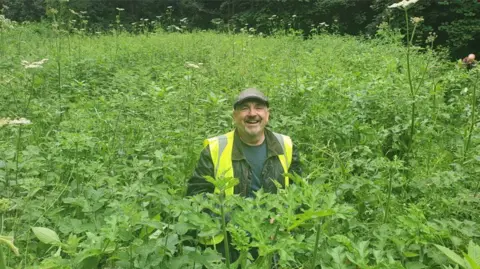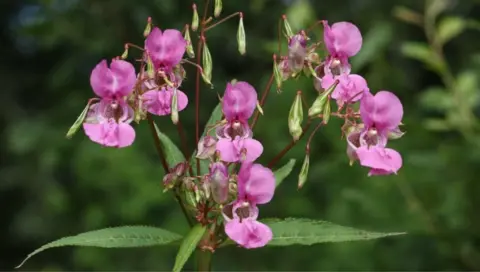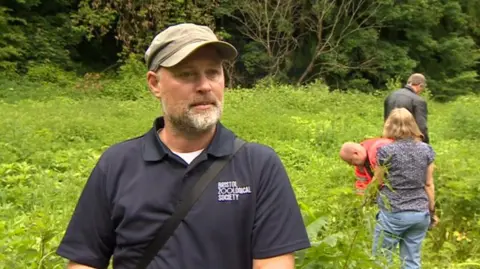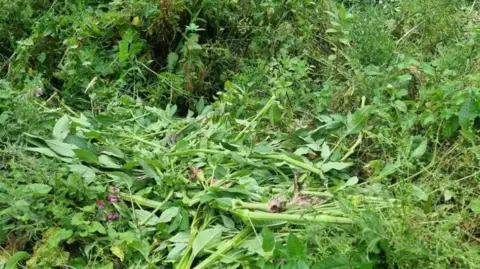Volunteers tackle invasive species at beauty spot
 Friends of Brislington Brook
Friends of Brislington Brook Volunteers are helping to tackle an invasive species crowding out native flora in a Bristol beauty spot.
The Friends of Brislington Brook said they were targeting the Himalayan Balsam thriving in St Anne's Wood.
Imported to the UK by Victorian botanists in 1839, the plant has no natural rivals and can quickly dominate ditches and river banks, wiping out indigenous species.
The volunteers are trying to clear the invasive flora from May to July before it starts seeding again.
'Best it can be'
Volunteer Jackie Friel-Thomas said she was helping out to benefit wildlife, herself and others.
"Everybody really appreciates the woods, so we're just trying to maintain it," she said.
"Also, we want it to thrive, we want it to be the best it can possibly be."
If the plant is allowed to grow, it can grow up to 10ft tall (3.05m) in one season and engulf surrounding vegetation.
It tolerates low light levels and shades out other plants, gradually impoverishing habitats.
 Getty Images
Getty Images'Just a monoculture'
Andy McBride-Coogan, chairman of the Friends of Brislington Brook group, said the species can easily grow out of control because each plant can produce up to 2,500 seeds.
"In India it grows to about maybe two or three feet high," he said.
"Here, it can be three and a half metres tall.
"It's astonishing, and it grows that much from seed every year."
The balsam in St Anne's Wood currently measures at about 1ft high.
"By the time we get to August they'll be 8ft high and there'll just be a forest of the things," Mr McBride-Coogan said.
"It chokes out all of the native species, and has flowers which are very rich in nectar, so the pollenating insects will preferentially pollenate the Balsam rather than native species, so native species die out and you finish up with just a monoculture."

Neil Green, a conservation officer at Bristol Zoological Society, added: "Eradication is possible but it's very difficult, so it's mainly control.
"Targeting certain areas with lots of volunteers and hitting them in a systematic way from the top of the water course down. Because if it's being seeded upstream, it's just flowing back down and repopulating this area."
 Friends of Brislington Brook
Friends of Brislington Brook 